Subway ads through the eras
Advertisements have been present in New York’s subway since its inception in 1904, appearing in vehicles and stations alike. Advertisers figured out rather quickly that they had a captive audience — at least for the length of a person’s ride — and began formatting ads with bold colors and simple, economically worded statements. Over the years, subway ads have promoted a mix of products and services — some that are still familiar today and others that have faded into history. Alongside these commercial messages, subway ads have also informed riders about health concerns, service improvements and new equipment.
The vintage ads preserved in the New York Transit Museum’s collection provide a glimpse into New York’s past, its vibrant culture and how it has changed over the years. Many of these ads are on view at the New York Transit Museum in Brooklyn, displayed within the museum’s fleet of vintage train cars. Curated for Vital City, this interactive gallery provides a look at the very subway ads straphangers might have seen if they glanced up during their commute in bygone eras.
All images are courtesy of the New York Transit Museum Collection.
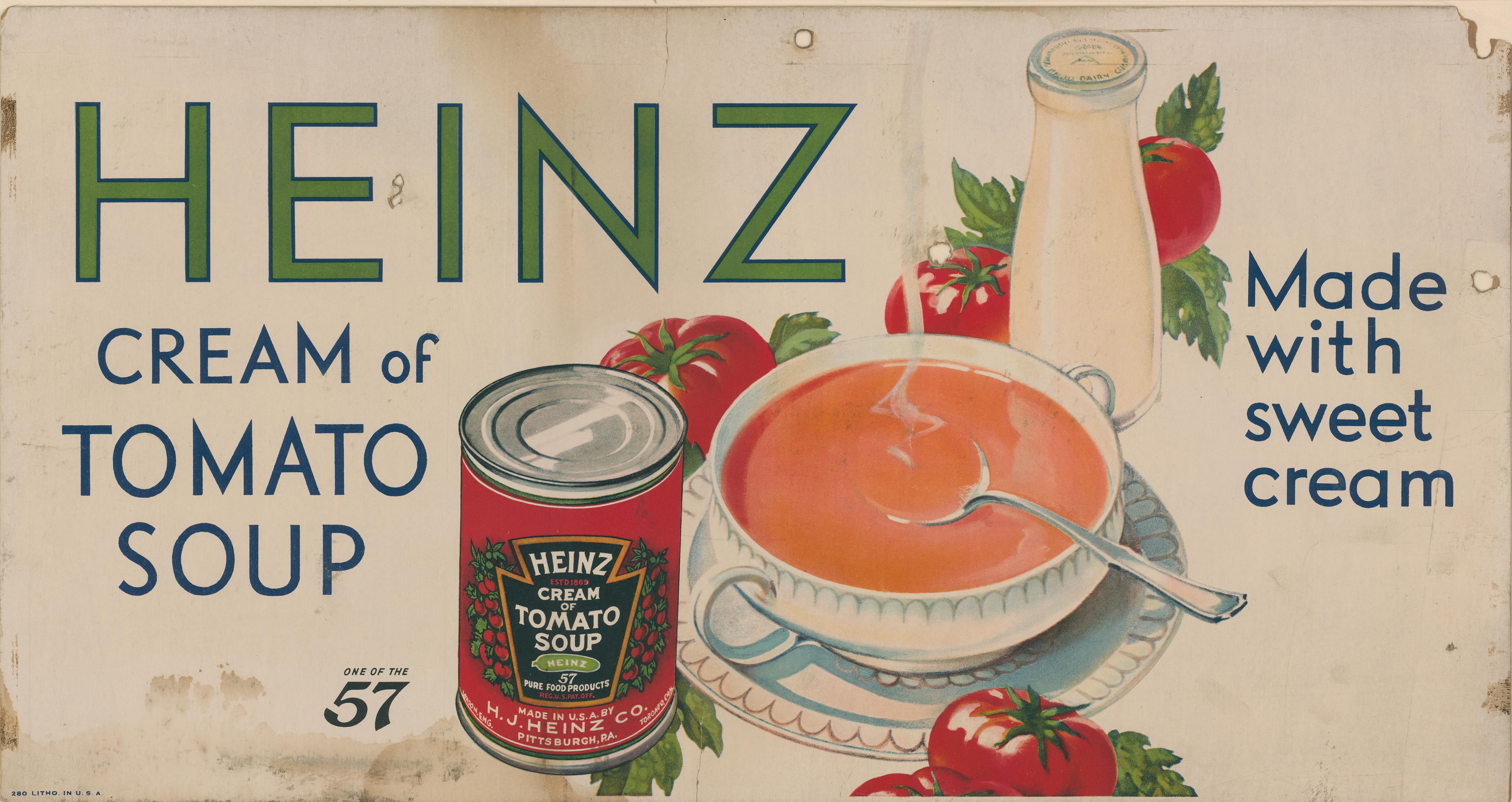
Heinz Cream of Tomato Soup, 1910s
Soup in cans dates back to the late 1880s, when the Campbell’s company developed a process for condensing soups, allowing them to be packaged in smaller containers.
Heinz’s Cream of Tomato soup was first introduced in 1910.
Soup in cans was a convenient way to feed one’s family, so it was no surprise that they would be advertised in surface and rail transportation.

Grape-nuts, 1930s
Displayed in historic 1930s R1/9 cars at the New York Transit Museum in Brooklyn, this vintage ad hearkens back to a time when Grape-Nuts was just becoming a breakfast staple across America. Curiously, Grape-Nuts cereal contains neither nuts nor grapes! The name is believed to be inspired either by the “grape sugar” (glucose) formed during baking or by the cereal’s resemblance to grape seeds.
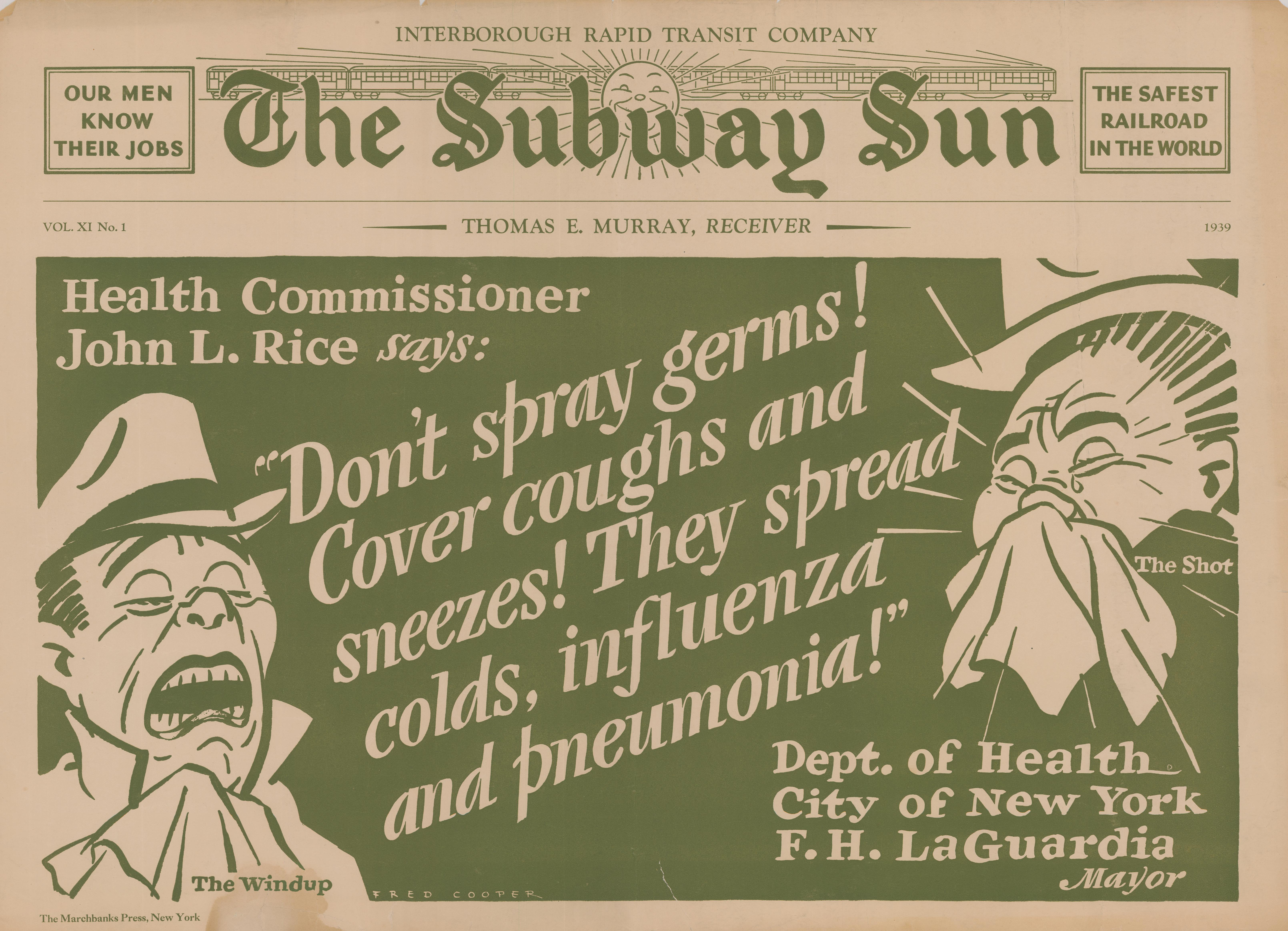
The Subway Sun, Vol. XI, No. 1, 1939
The IRT began issuing twin poster series — The Subway Sun and The Elevated Express — for display in its cars in 1918. At first, the posters were used to promote the benefits and conveniences of the IRT system, to announce schedule, fare and safety information, and to publicize scenic and cultural attractions along the route. In the mid-1930s, Frederic G. Cooper (1883-1962) took over as the principal artist and designer for both series. A renowned illustrator and graphic designer who had served as a staff artist and the cartoon editor of the original Life humor magazine (1883-1936), Cooper created amusing subway and elevated car cards in a distinctive cartoon style.
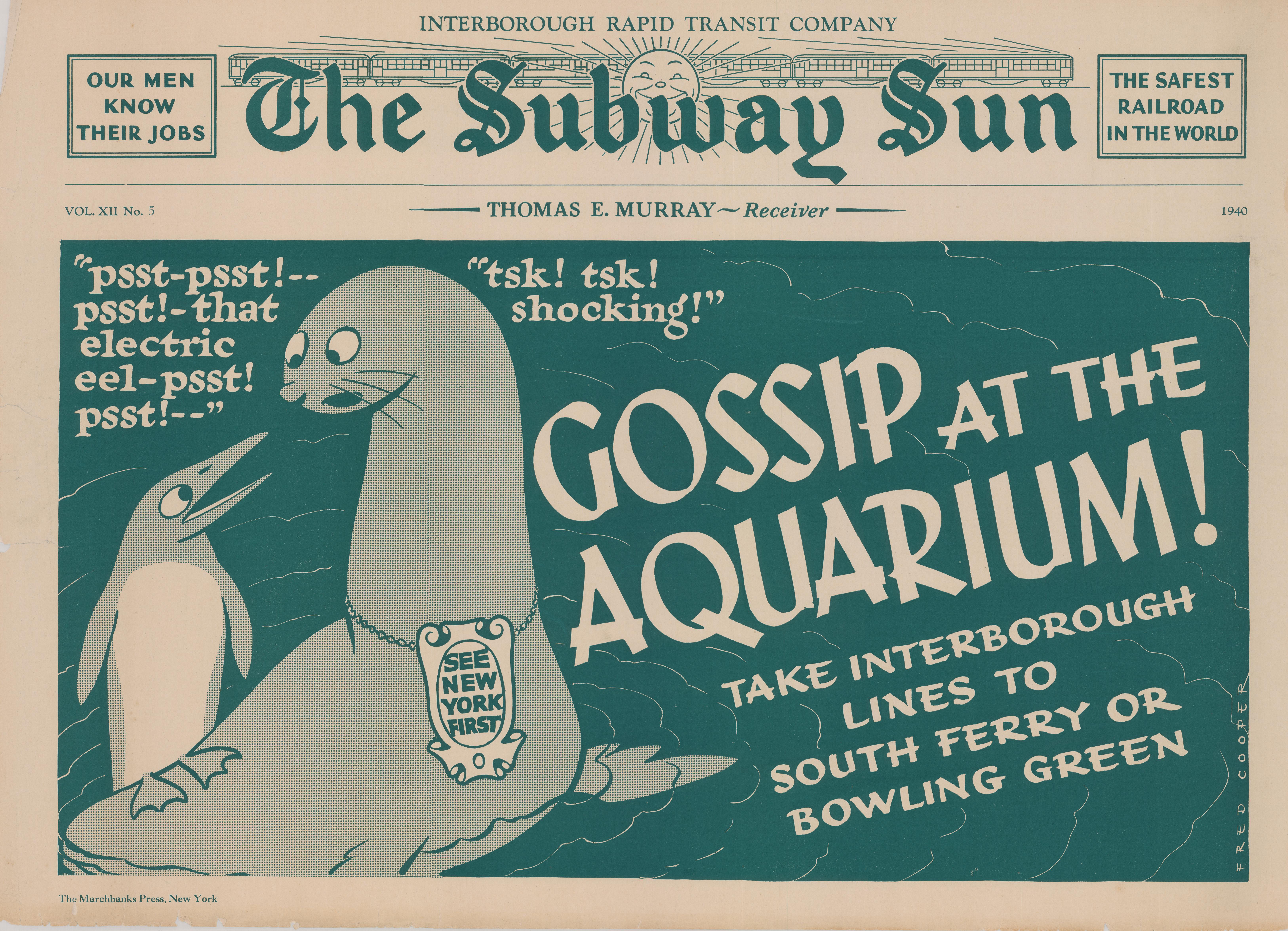
The Subway Sun, Vol. XII, No. 5, 1940
Tourist attractions and animals were frequent subjects of subway advertising — and this ad for the New York Aquarium has both. Before relocating to Coney Island in the mid-1950s, the Aquarium was located at Castle Clinton in Battery Park.
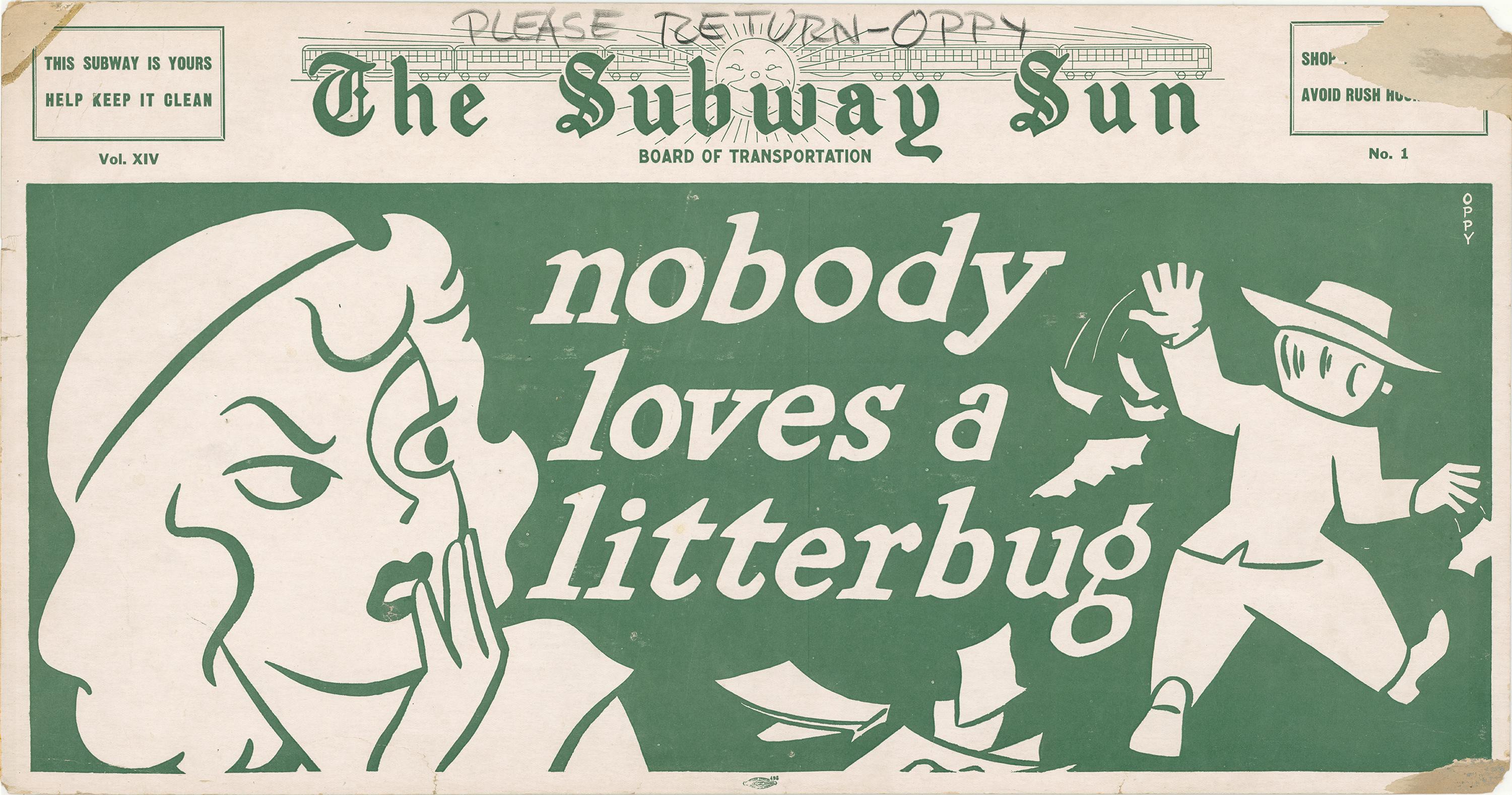
The Subway Sun, Vol. XIV, No. 1, 1946
Fred Cooper recommended his protégé Amelia Opdyke Jones (1913-1993) to take over as the creator of the Subway Sun campaign in 1946. During her 20-year tenure, her popular “subway sermons” earned her the nickname “The Emily Post of the Subway.” Jones’ humorous depictions of the violations of the subway’s social contract directly resulted in cleaner cars and stations. She is also credited with coining the term “litterbug,” a play on the name of the popular “jitterbug” dance.
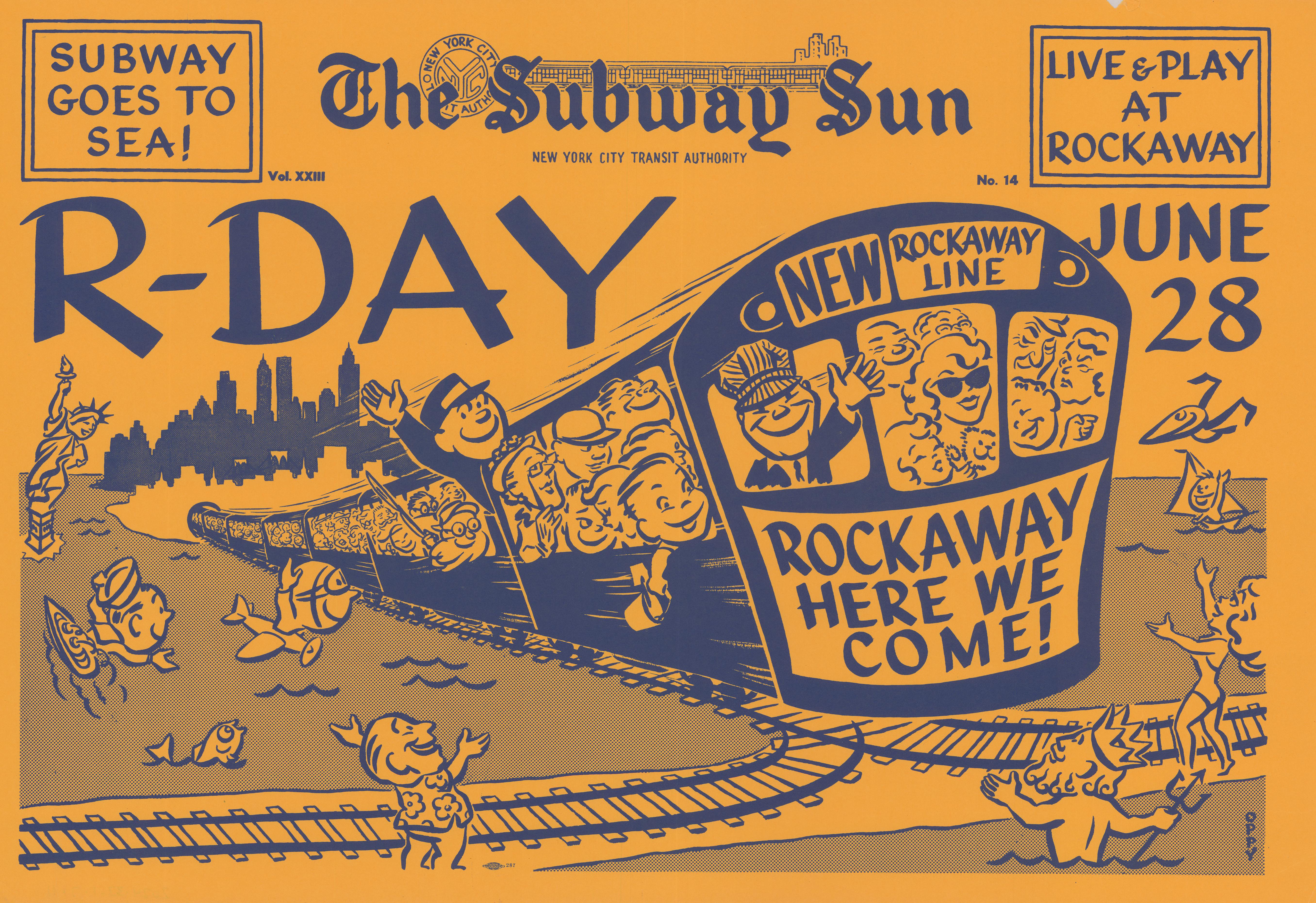
The Subway Sun, Vol. XXIII No. 14, 1956
The opening of the IND Rockaway Line (today’s A and S) was cause for celebration: It restored a direct route through New York City to the Rockaways. Initially opened as the New York, Woodhaven and Rockaway Railroad, the route was sold to the LIRR in 1887. In 1950, a fire destroyed the wooden trestle that carried trains through Jamaica Bay. Since the LIRR was bankrupt at that time, service was not restored. The City’s Board of Transportation purchased the line in 1952 with the intention of converting it to subway service, which began on June 26, 1956, and was commemorated as “R-Day.”
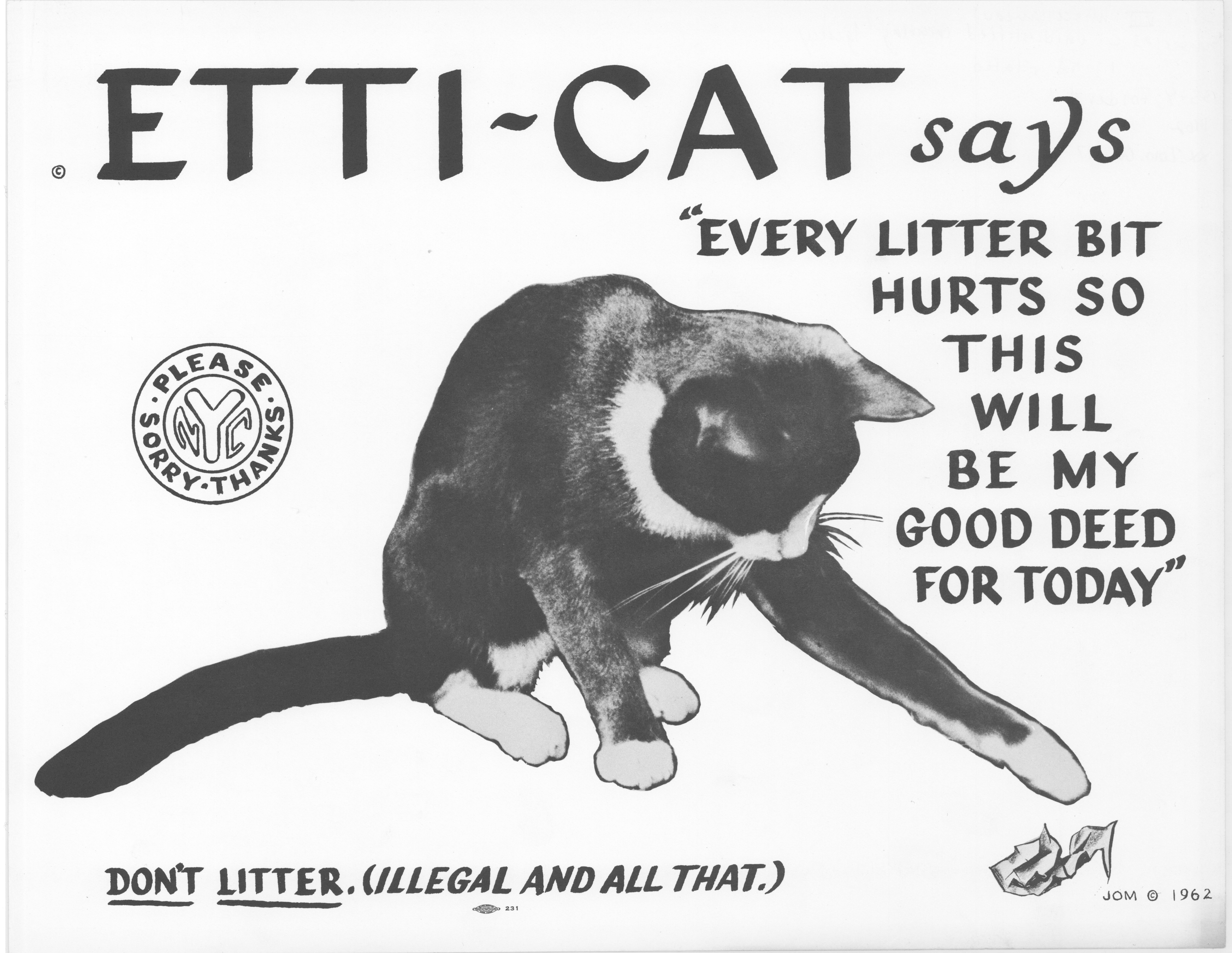
Etti-Cat says …, 1962
Etti-Cat first appeared on the subway in 1962 in a poster about giving seats to older riders.
The Etti-Cat campaign was created by Jo Mary McCormick, and Etti-Cat is portrayed by her cat Pipsqueak. The ads were seen in 3,000 subway cars, which was nearly half the fleet at the time. Etti-Cat even starred in his own children’s book.

Transit Authority trains run 95% on time, 1960s
Peter Gee (1932-2005) was a British-born artist who lived and worked in New York for most of his life. A large portion of his work revolved around color theory, and his preferred process was silkscreen.
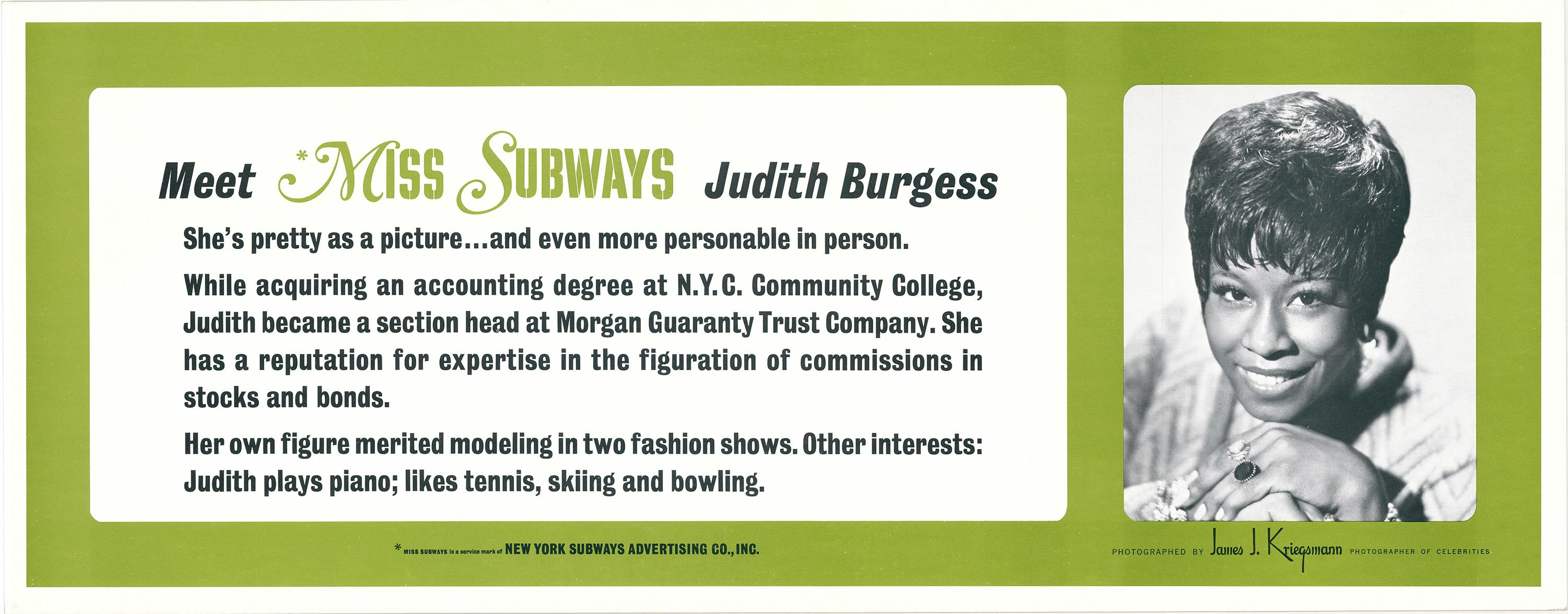
Meet Miss Subways Judith Burgess, 1972
Miss Subways was a contest run by the New York Subways Advertising Company from 1941 to 1976. For the first few decades of the contest, the winners were picked by one man: John Robert Powers. In 1963, the winners were determined by popular vote. The only criteria for being eligible for the title was that Miss Subways had to be a resident of New York City and take the subway on a regular basis.
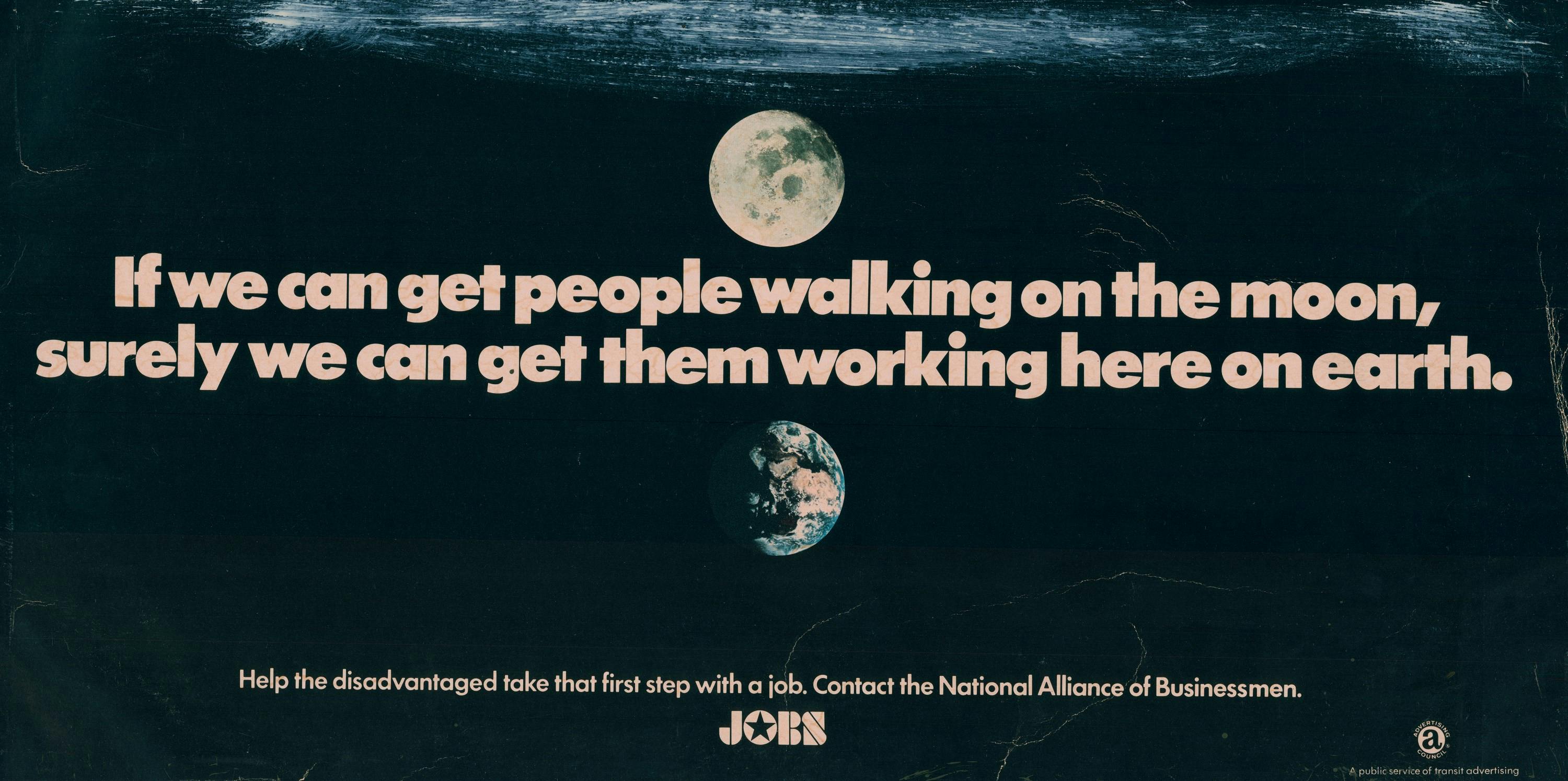
If we can get people walking on the moon …, 1972
In 1972, this subway ad created by the National Alliance of Businessmen used the triumph of the moon landing to inspire New Yorkers to tackle challenges closer to home. By urging citizens to help the disadvantaged find jobs, the ad reflects the era’s drive for progress and equality.
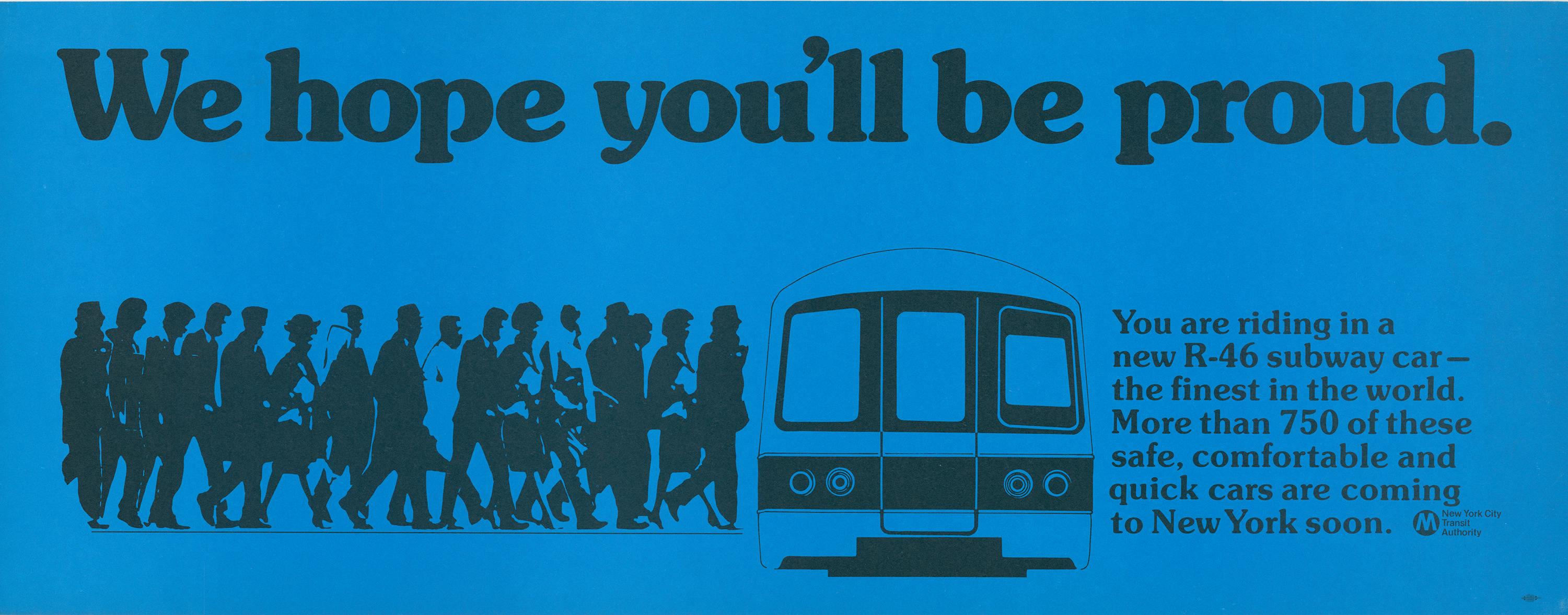
We hope you’ll be proud, 1975
New subway cars are always newsworthy to riders, so when they are introduced into the system, they are often accompanied by in-car advertisements. The R-46 cars were introduced in 1975 to replace the B Division’s remaining cars from the 1930s and 1940s, as well as some cars from the 1950s. More than 700 are still working hard in Brooklyn and Queens.
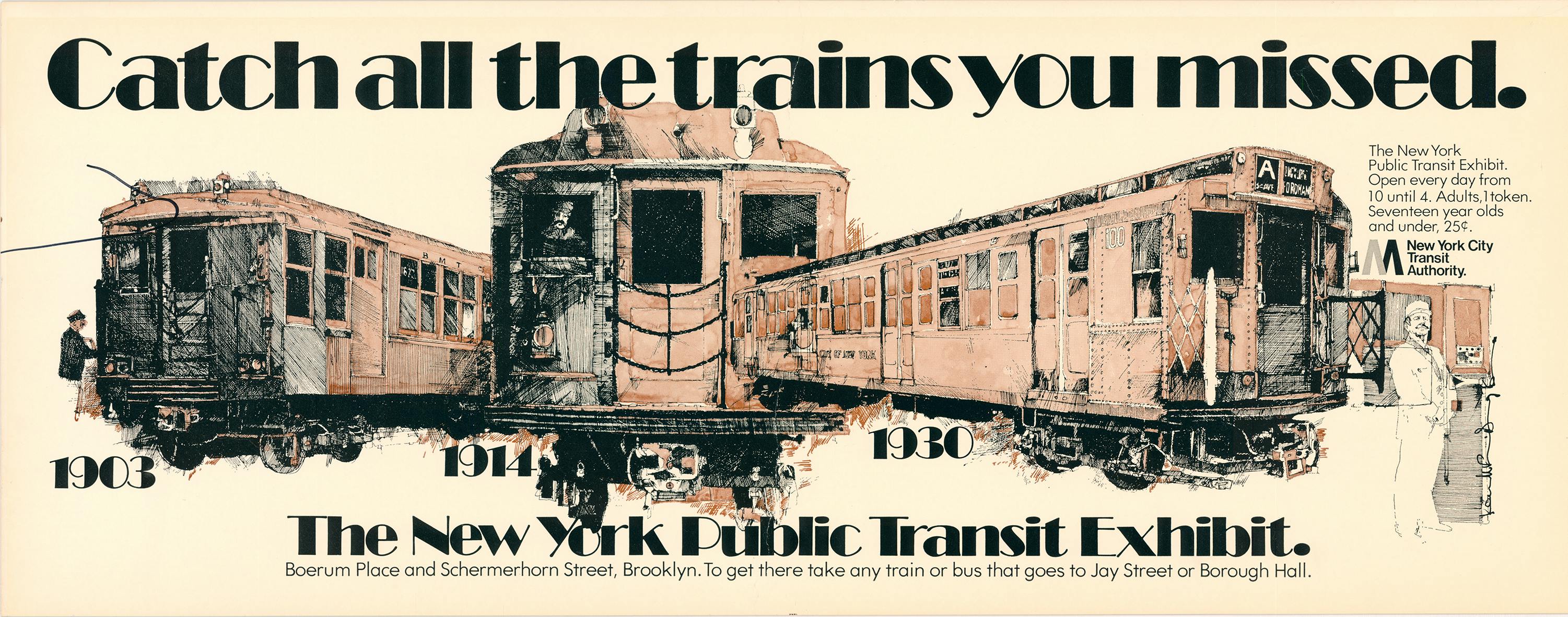
Catch all the trains you missed, 1976
The New York Public Transit Exhibit opened to the public on July 4, 1976, as part of the United States’ Bicentennial celebration, and was originally intended to be on view until Sept. 7. The exhibit was so popular that it never closed, and became known as the New York Transit Museum. In 2026, the museum will celebrate its 50th anniversary.
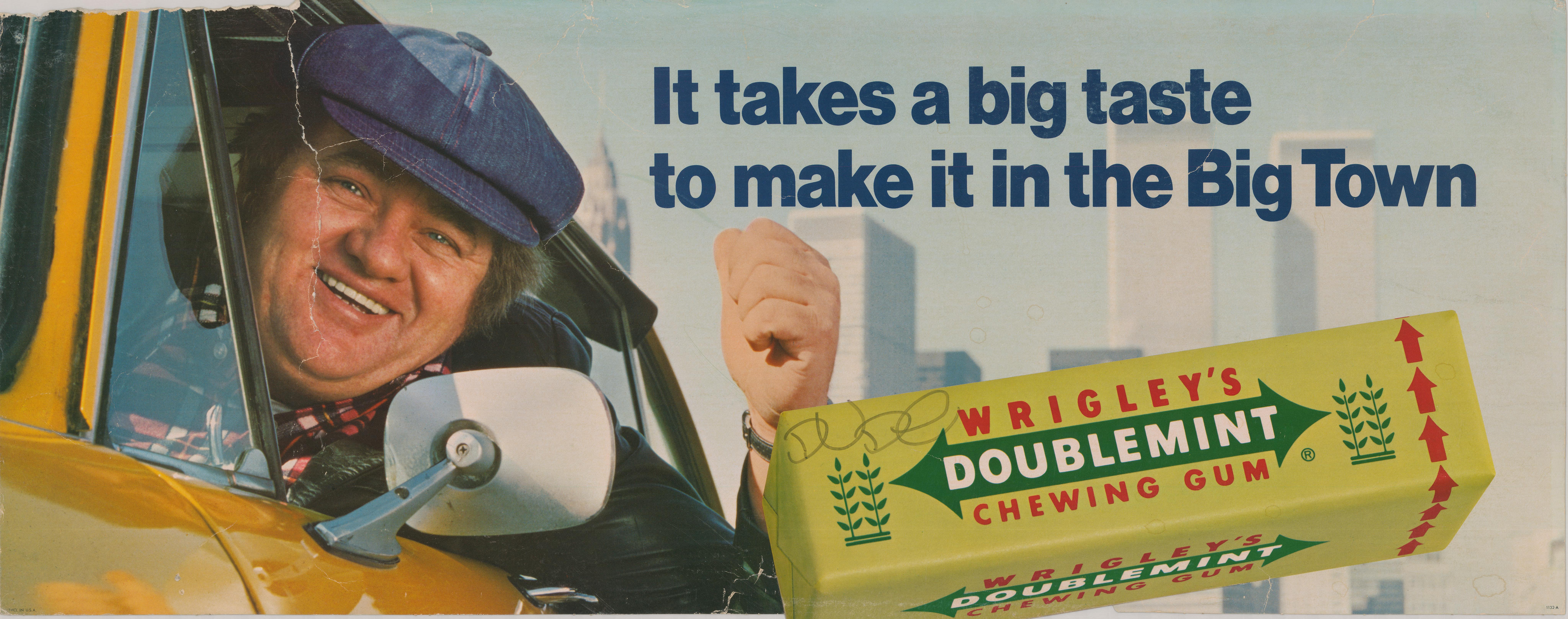
It takes a big taste …, 1980s
Before Doublemint Gum became a common find in pockets and purses everywhere, it was advertised in the subway, catching the eye of millions of riders each day. These ads were key in establishing Doublemint as an iconic brand, one that remains a go-to choice today. It’s a nostalgic reminder of how this classic gum first found its way into the everyday lives of so many.
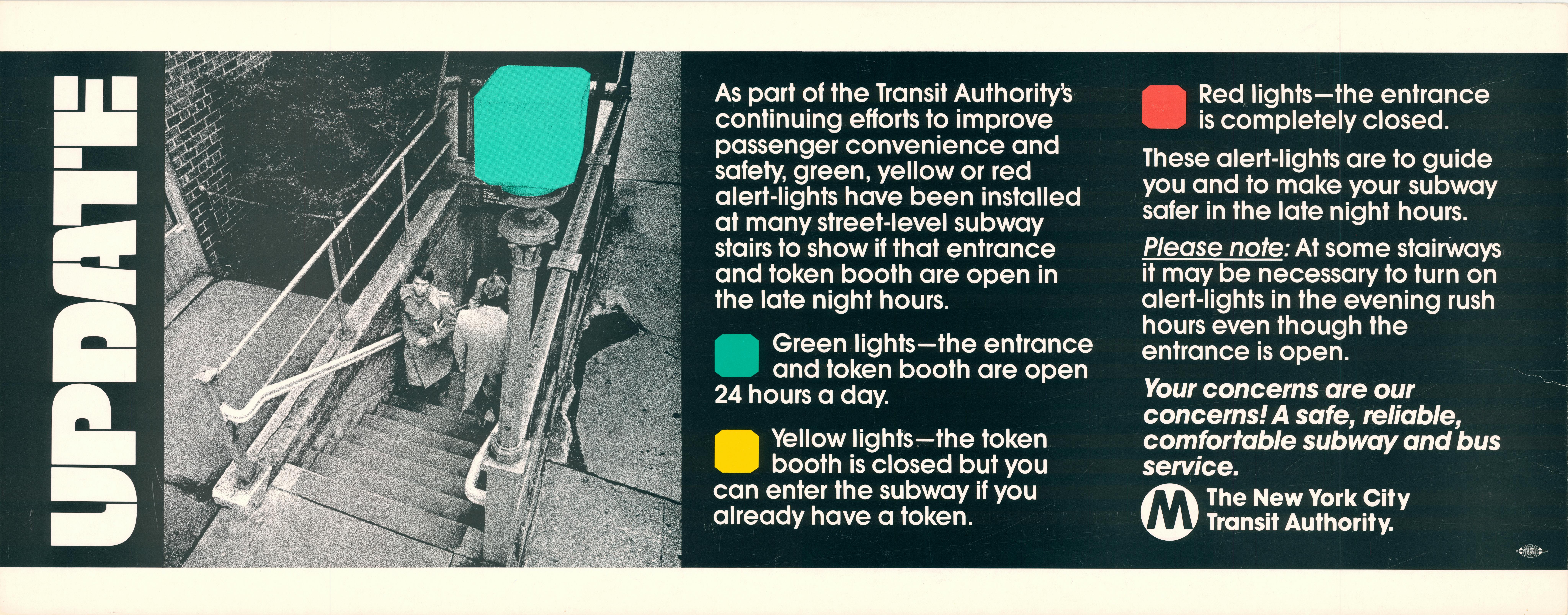
Update: Entrance Globes, 1980s
Color-coding of entrance globes began in the early 1980s to help customers determine which entrances had a manned booth. Green indicated a 24-hour token booth, yellow meant a part-time booth and red indicated exit only. After the introduction of the MetroCard and the installation of High Entrance and Exit Turnstiles (HEET), exit-only indicators were generally no longer needed.
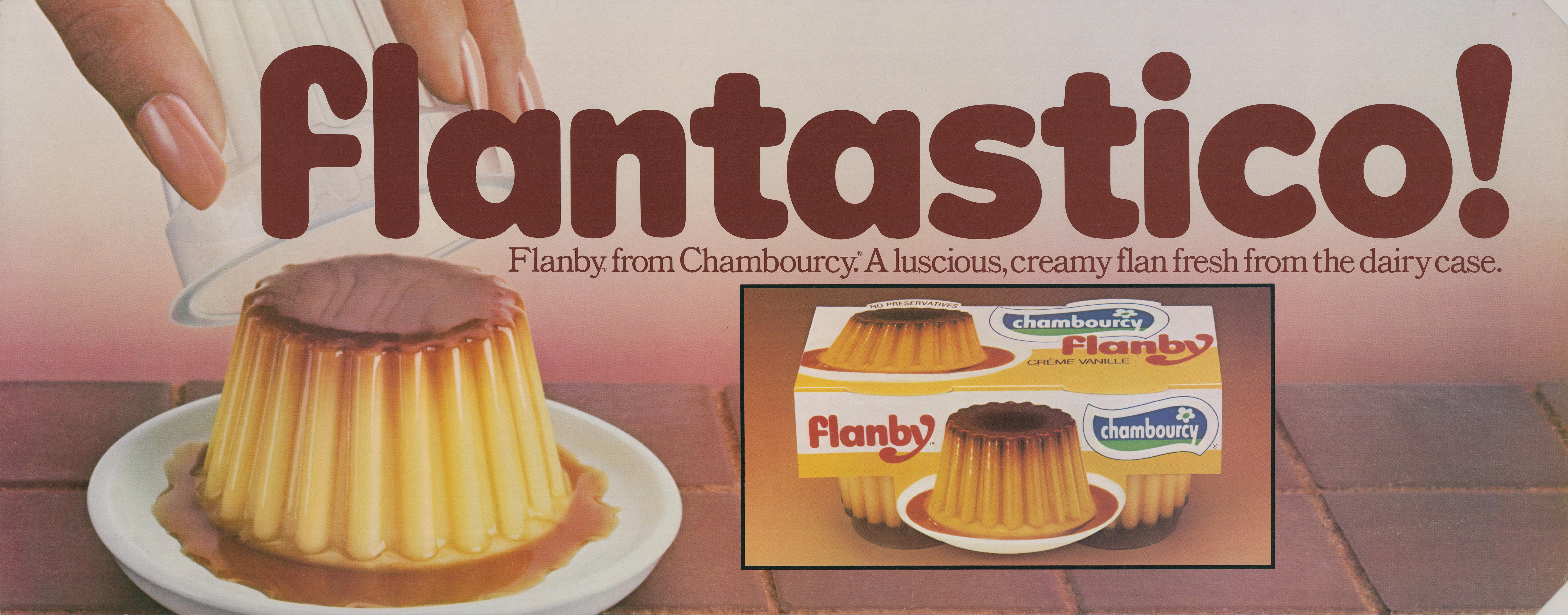
Flantastico!, 1980s
Imagine catching your train and spotting an ad tempting you with the creamy sweetness of flan. Back in the day, subway ads often featured delicious treats like this, inviting riders to indulge in the rich, caramel delight. It’s a sweet reminder of how even a simple commute could spark a craving for something delicious.

When it’s 102 in here …, 1983
In the heyday of subway advertising, Miller High Life once graced the walls of subway trains, offering a glimpse of the “champagne of beers” during daily commutes. However, in 2017, alcohol ads were banned from the subway system. This shift came as part of a broader move to promote healthier lifestyles and protect younger riders from such promotions.
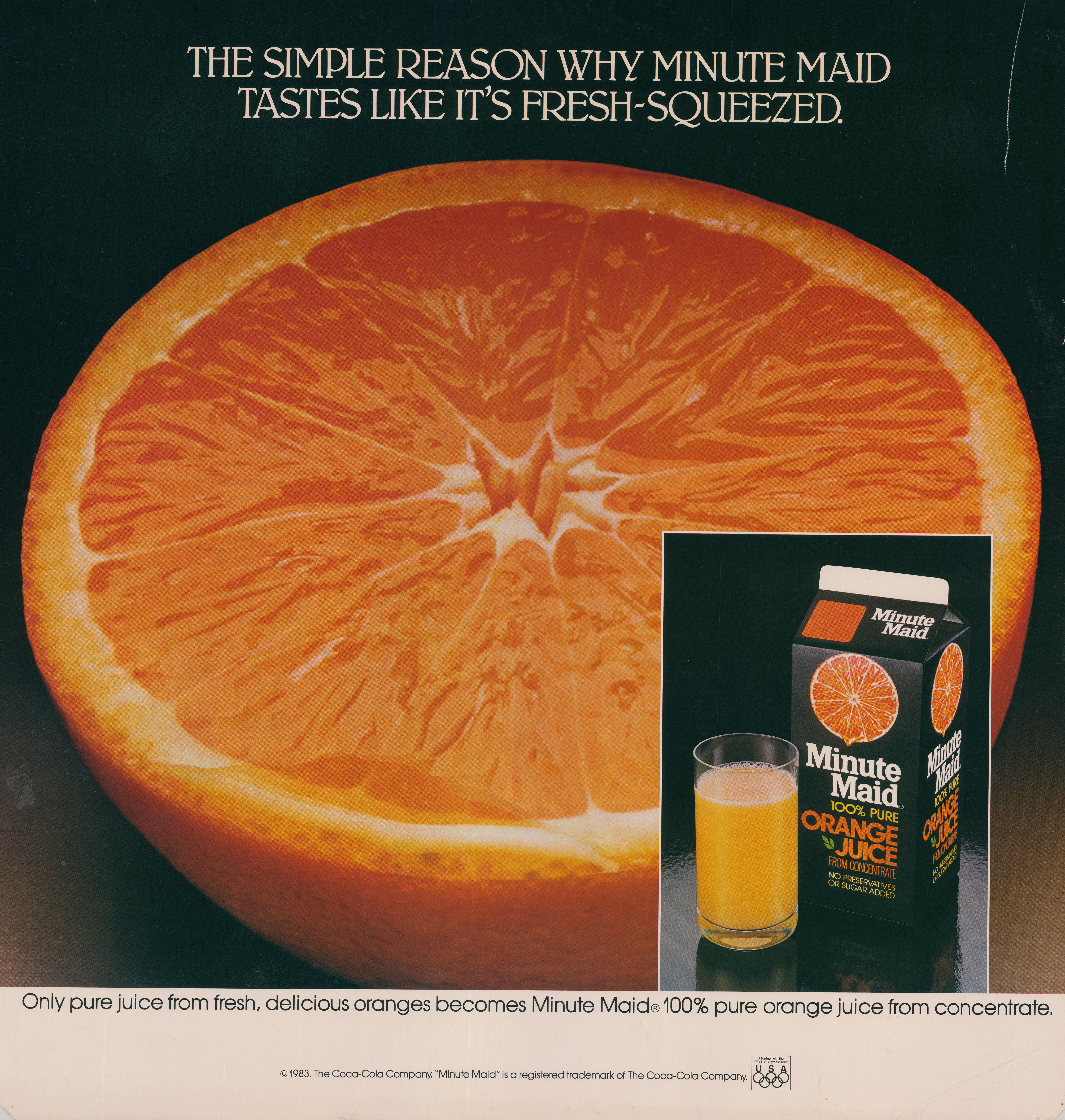
The simple reason …, 1983
Back when Minute Maid was a fresh face on the beverage scene, subway riders were enticed by vibrant ads that brought a burst of citrusy joy to daily commutes, turning even the busiest subway ride into a refreshing moment.
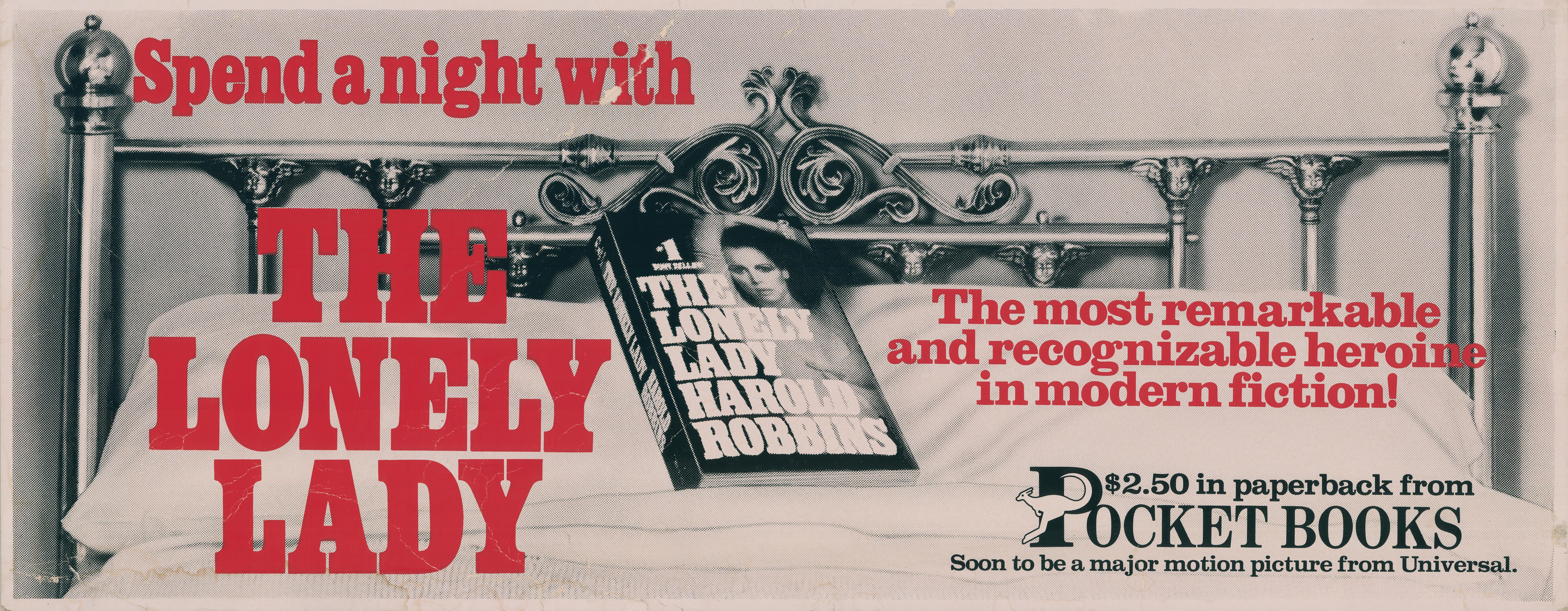
The Lonely Lady, 1986
Decades ago, subway car ads frequently featured the latest books, giving riders a quick suggestion for their next read. While today’s commuters may be more often glued to their electronic devices, a glance at those vintage ads could have sparked a new literary adventure.
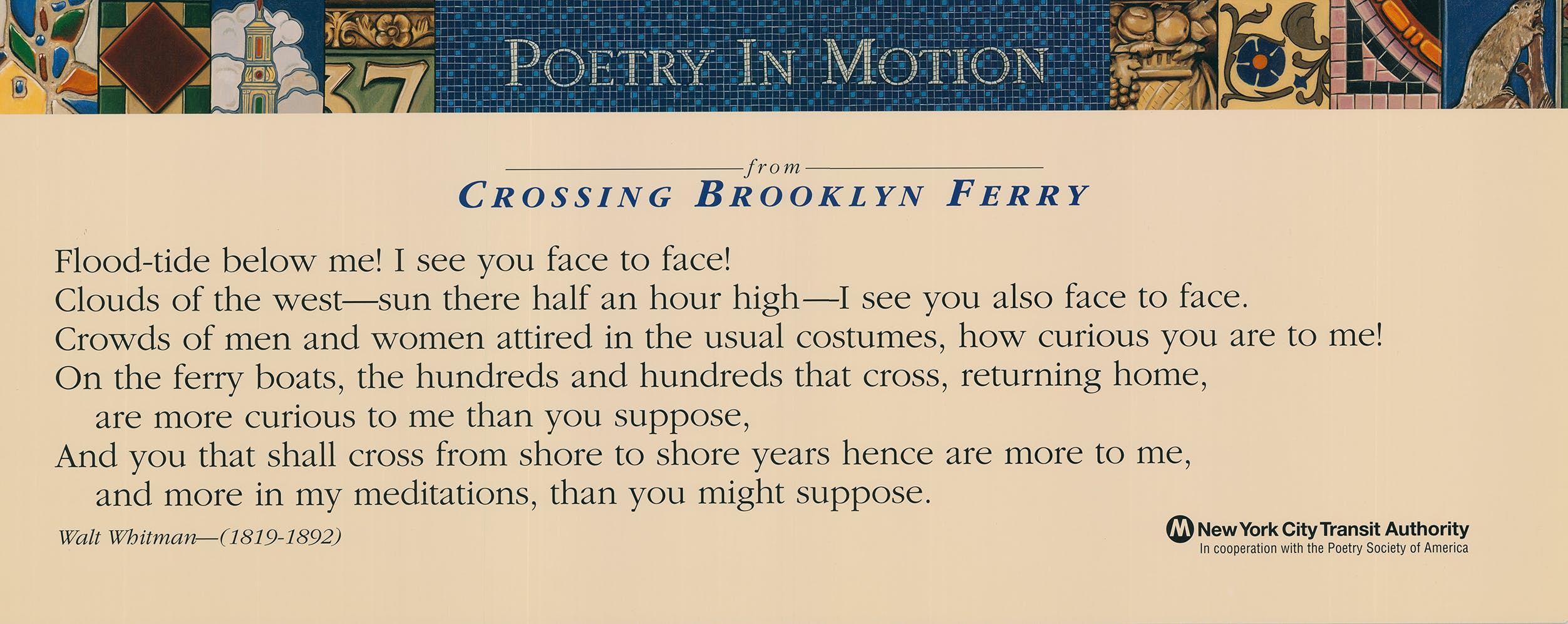
Crossing Brooklyn Ferry, 1992
Poetry in Motion first appeared in New York’s subway system in October 1992, featuring poems by Emily Dickinson, Lucille Clifton, W. B. Yeats and Walt Whitman. This wildly successful initiative has helped poetry gain a wider audience and inspire riders of all ages.

Decision XV, 2001
The Decision was an ad campaign developed by the New York City Department of Health to warn Spanish speakers about the dangers of AIDS. When the campaign debuted in 1990, the disease was already a devastating public health issue. Riders of the subway followed Julio and Marisol for 11 years, and the ads were even collected into a comic book.

Now you can have beautiful clear skin, 2001
Dr. Jonathan Zizmor (b. 1945) rose to fame in New York City not through television or radio, but through the subway. Beginning in 1981, these ads, designed by Dr. Zizmor himself, featured his smiling face and promises of clear skin. Over decades, the ads became a fixture of the subway — and a frequent punchline of jokes — cementing his status as one of the city’s most recognizable figures.
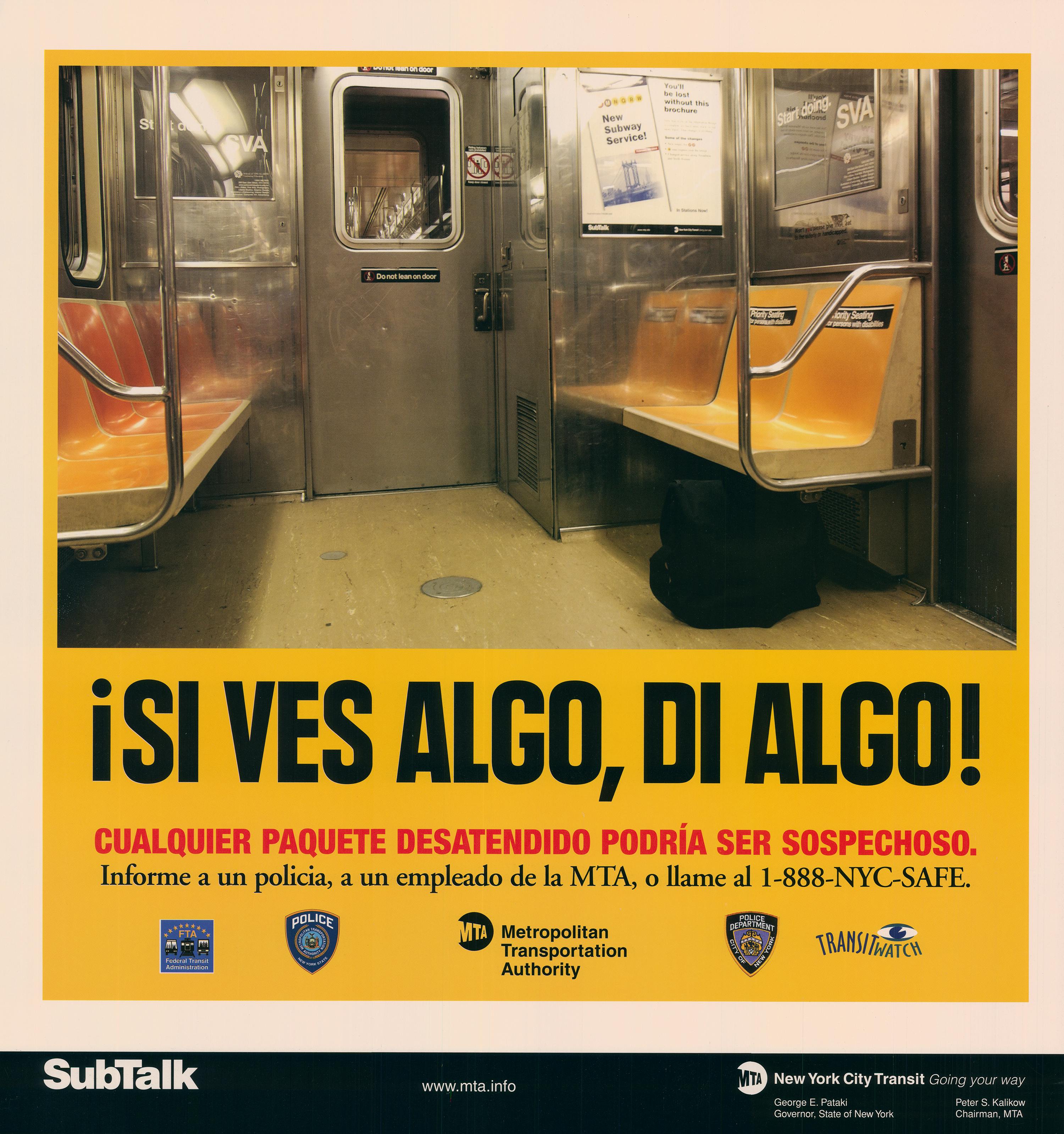
Si ves algo, di algo, 2005
“If you see something, say something” is now common parlance everywhere in the world, but it was in the New York City subway that the phrase was first used, following the terrorist attacks on Sept. 11, 2001. This is an example of the warning in Spanish.